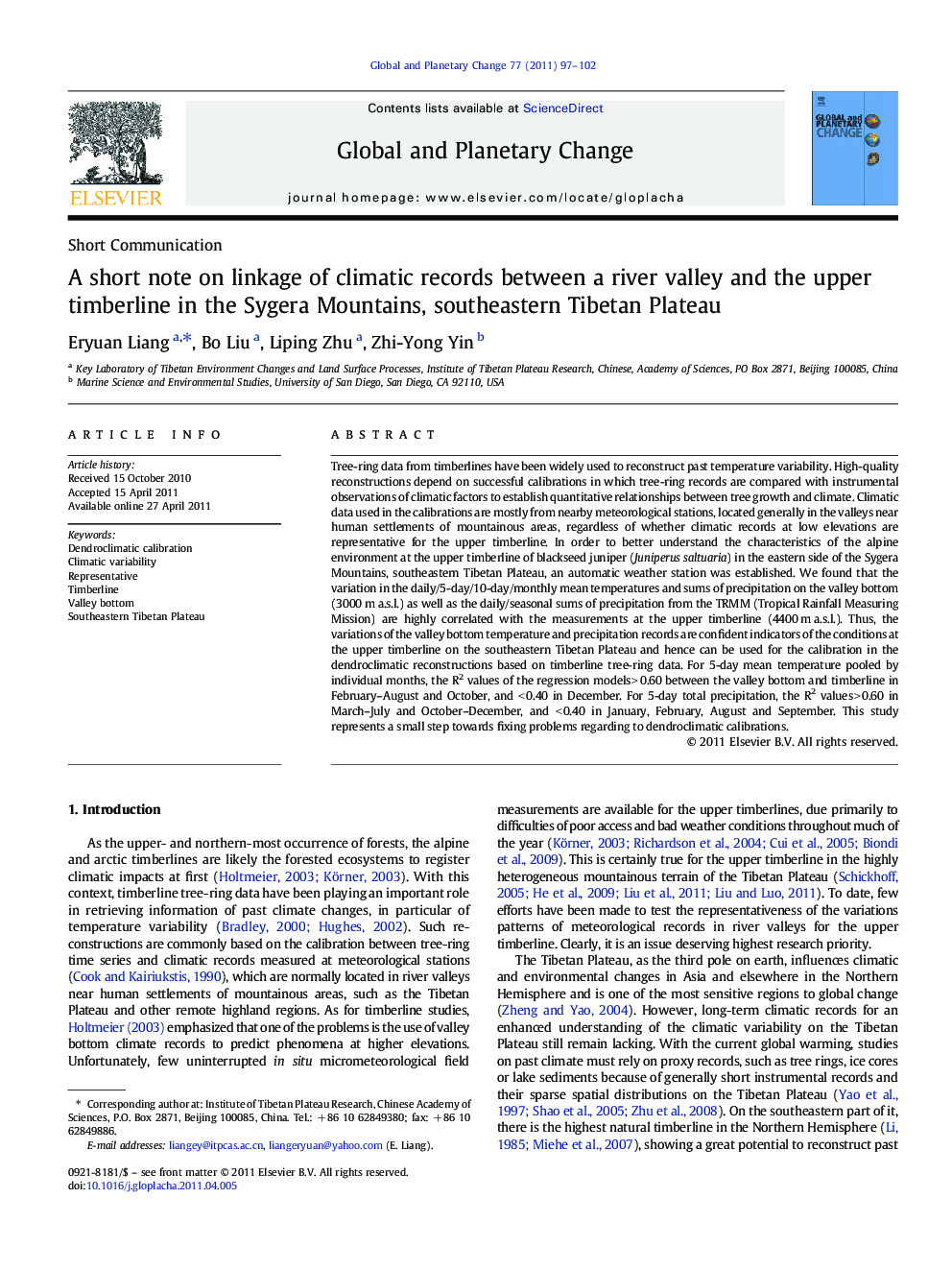| کد مقاله | کد نشریه | سال انتشار | مقاله انگلیسی | نسخه تمام متن |
|---|---|---|---|---|
| 4463845 | 1621697 | 2011 | 6 صفحه PDF | دانلود رایگان |

Tree-ring data from timberlines have been widely used to reconstruct past temperature variability. High-quality reconstructions depend on successful calibrations in which tree-ring records are compared with instrumental observations of climatic factors to establish quantitative relationships between tree growth and climate. Climatic data used in the calibrations are mostly from nearby meteorological stations, located generally in the valleys near human settlements of mountainous areas, regardless of whether climatic records at low elevations are representative for the upper timberline. In order to better understand the characteristics of the alpine environment at the upper timberline of blackseed juniper (Juniperus saltuaria) in the eastern side of the Sygera Mountains, southeastern Tibetan Plateau, an automatic weather station was established. We found that the variation in the daily/5-day/10-day/monthly mean temperatures and sums of precipitation on the valley bottom (3000 m a.s.l.) as well as the daily/seasonal sums of precipitation from the TRMM (Tropical Rainfall Measuring Mission) are highly correlated with the measurements at the upper timberline (4400 m a.s.l.). Thus, the variations of the valley bottom temperature and precipitation records are confident indicators of the conditions at the upper timberline on the southeastern Tibetan Plateau and hence can be used for the calibration in the dendroclimatic reconstructions based on timberline tree-ring data. For 5-day mean temperature pooled by individual months, the R2 values of the regression models > 0.60 between the valley bottom and timberline in February–August and October, and < 0.40 in December. For 5-day total precipitation, the R2 values > 0.60 in March–July and October–December, and < 0.40 in January, February, August and September. This study represents a small step towards fixing problems regarding to dendroclimatic calibrations.
Research highlights
► We test the linkages between the climatic records on the valley bottom and timberline on the southeastern Tibetan Plateau.
► The variation patterns in the daily, 5-day, 10-day and monthly temperature and precipitation data are very consistent between timberline and the valley bottom.
► Their agreements increase with increasing lengths of the time-intervals for data summary.
► The valley bottom climatic records can be used for dendroclimatic calibration based on timberline tree-ring data.
Journal: Global and Planetary Change - Volume 77, Issues 1–2, May 2011, Pages 97–102